Beloved for its complex, layered past, Istanbul, where East meets West, may also offer a vision of what’s to come. There is so much to do while exploring the city of Istanbul, countless foods to sample, sites to visit and culture to thoroughly immerse one’s self in. But, some of the most impressive historical and architectural gems of the city are the numerous mosques whose minarets dot the landscape.
Hagia Sophia
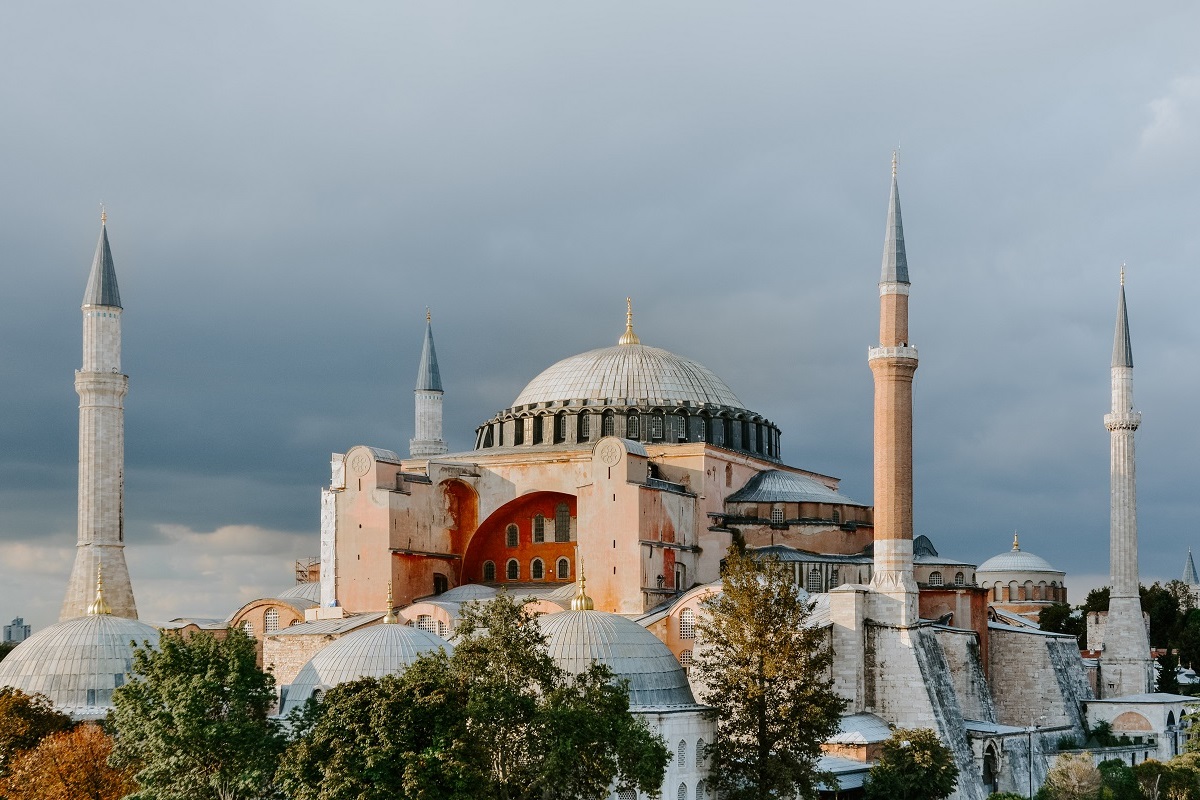
It is perhaps the city’s most recognizable site. It stands as one of greatest examples of Byzantine architecture in the world. Though no longer an active mosque, the Hagia Sophia did serve as a model for the most striking and important religious structures built during the Ottoman Empire. The building began as a basilica during the Byzantine Empire and was converted to a mosque following the conquest of Constantinople by the Ottoman Turks in 1453.
Many of the Christian elements of the structure were removed, including the altar and iconostasis. Mosaics depicting Christian themes were plastered over due to the forbiddance of representational imagery in Islam. Islamic features were added to the building over time. The architecture of the Hagia Sophia influenced designers of later mosques in Istanbul and the Hagia Sophia served as the main religious structure in Istanbul for half a century. In 1935 the Republic of Turkey converted the Hagia Sophia into a museum. Plaster covering early Christian mosaics was removed during restoration as were carpets covering much of the interior, revealing marble decorations.
Sultan Ahmed Mosque
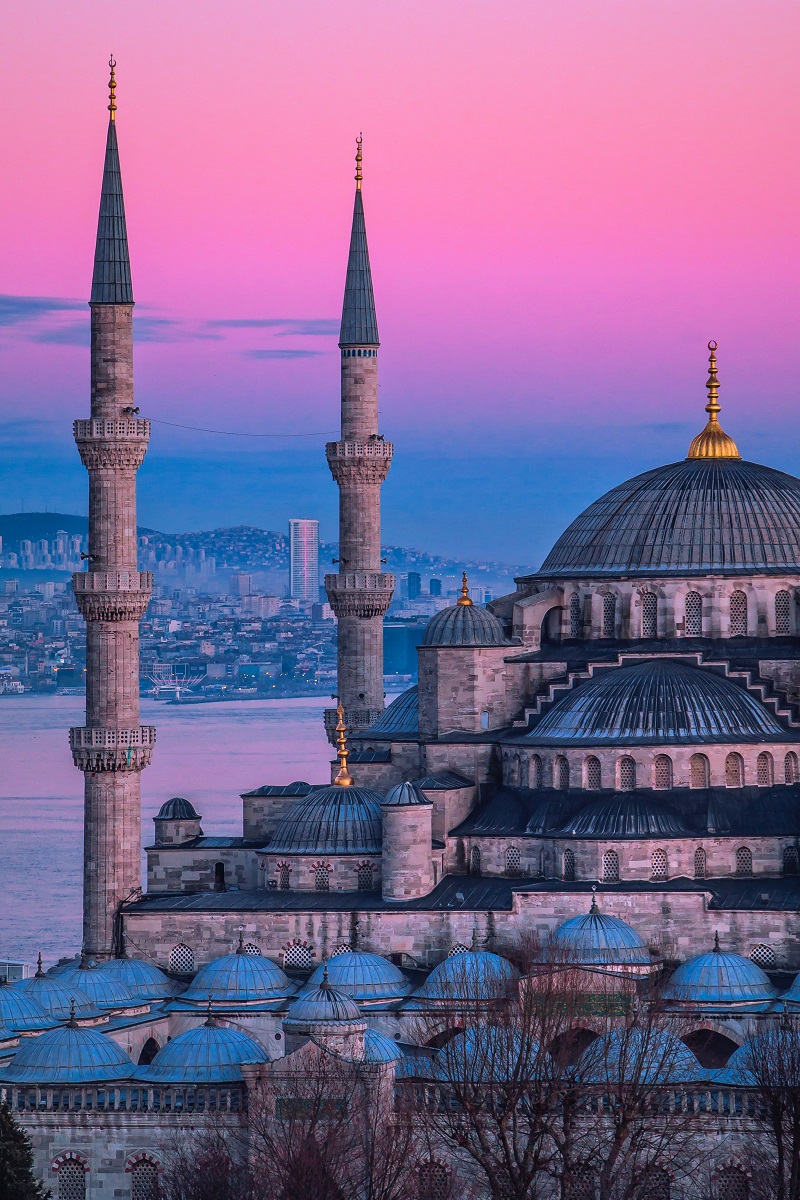
It is known by many as the Blue Mosque, due to the blue hued tiles covering the walls of the interior of the building. The mosque was constructed between 1609 and 1616, under the reign of Ahmed I. The sultan ordered the religious structure built facing Hagia Sophia, the most honored mosque in the Ottoman Empire at that time. The architecture of the mosque combines both Ottoman and Byzantine elements and is considered the last significant mosque of the classical period of the Ottoman Empire.
A large courtyard surrounded by an arcade greets visitors to the mosque. The impressive interior is decorated with intricately designed ceramic tiles and low hanging chandeliers light the prayer room. The mosque is one of only two in Turkey to have six minarets. Five times a day the call to prayer can be heard from the Sultan Ahmed Mosque, a beautiful, enchanting sound that echoes throughout the city.
Süleymaniye Mosque
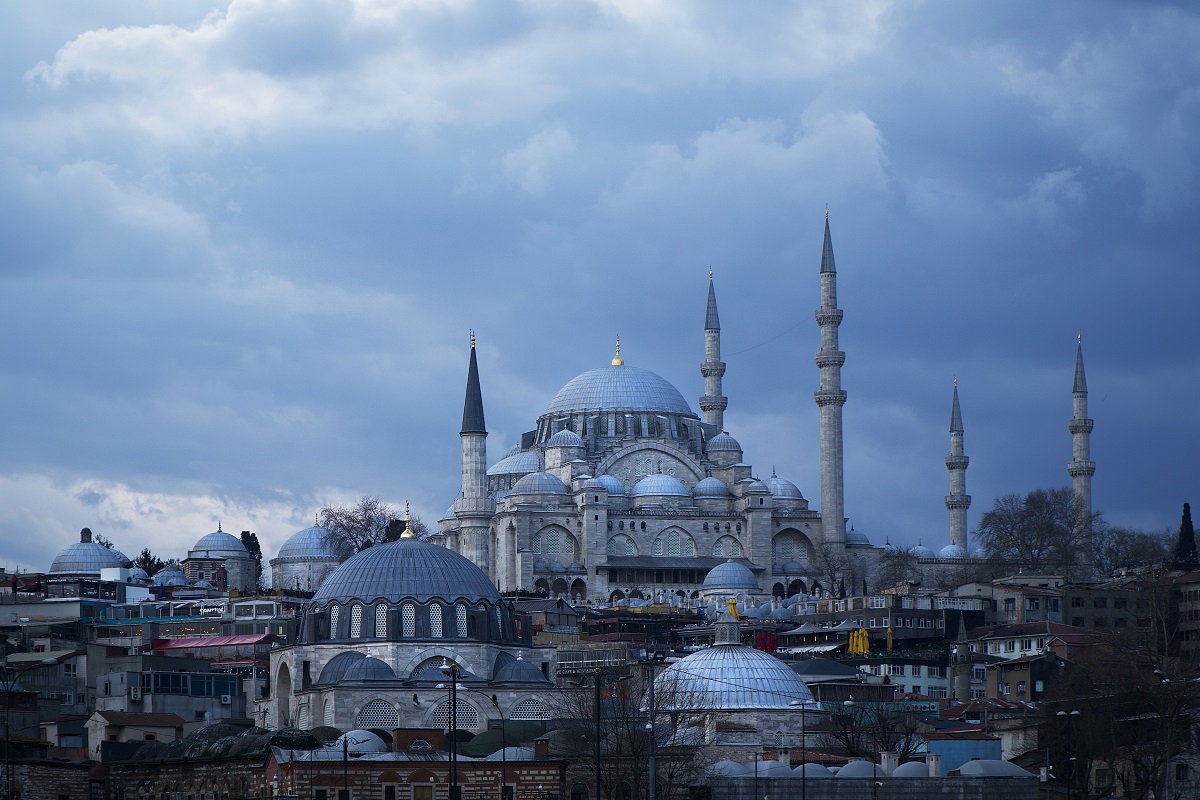
It is the city’s second largest mosque, constructed in the mid-16th Century by Suleiman the Magnificent. Like many of the Ottoman mosques throughout the city, a large courtyard precedes the main building. The four minarets of the mosque are located at the corners of the courtyard and a large colonnade forms the perimeter of the outdoor space. The interior is more subdued when compared to that of the Sultan Ahmed Mosque, but still quite beautiful. Ceramic tiles adorn the walls and domed ceiling.
Yeni Mosque (or New Mosque)
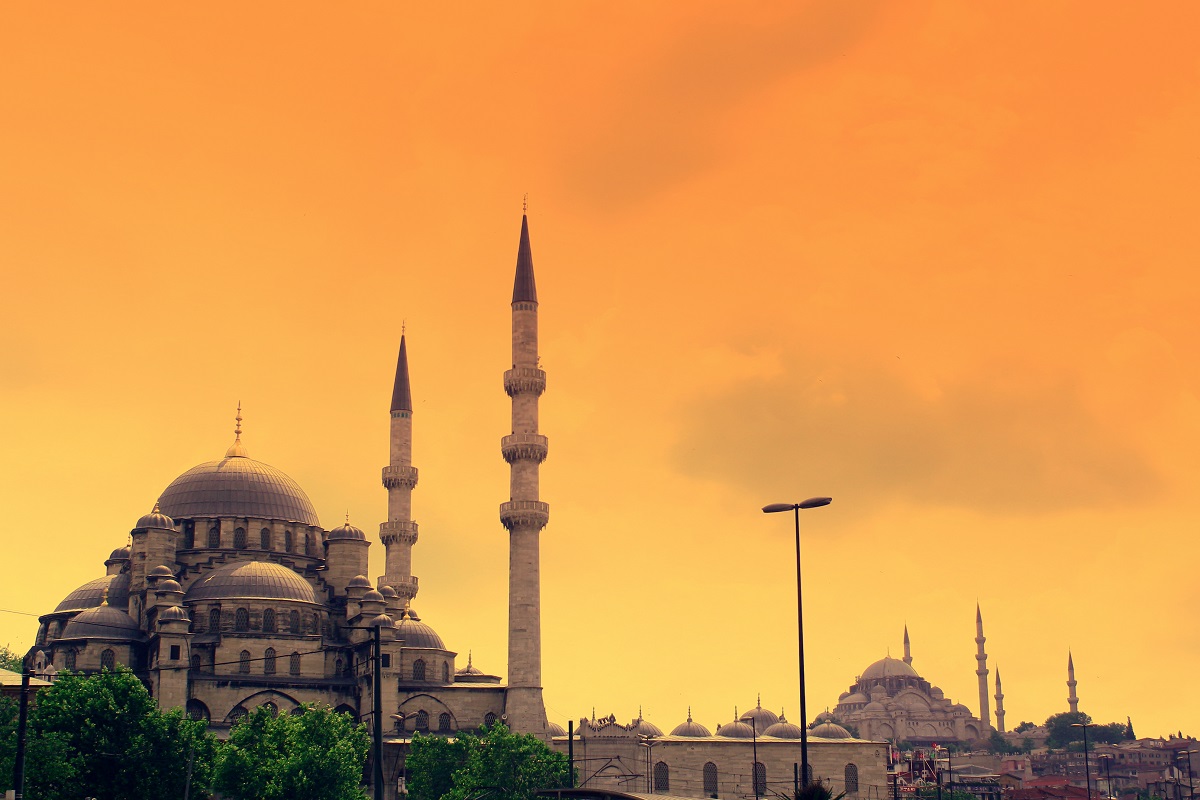
It is yet another example of an imperial, religious building constructed during the Ottoman Empire. The building is located near the Galata Bridge, on the Golden Horn. Plans for the mosque began in the late 16th Century, but due to political and financial constraints, the building was not completed until 1663. An impressive number of domes and semi-domes, sixty-six in total, mark the exterior. Once inside, visitors can observe the impressive tile work decorating each of the domes.
Like other imperial mosques, the Yeni Mosque was originally designed as a complex with additional buildings constructed to serve cultural needs of the city. One of the buildings that still survives is the Egyptian or Spice Bazaar, a popular tourist destination and the city’s second largest market behind the Grand Bazaar.
Other noteworthy Mosques
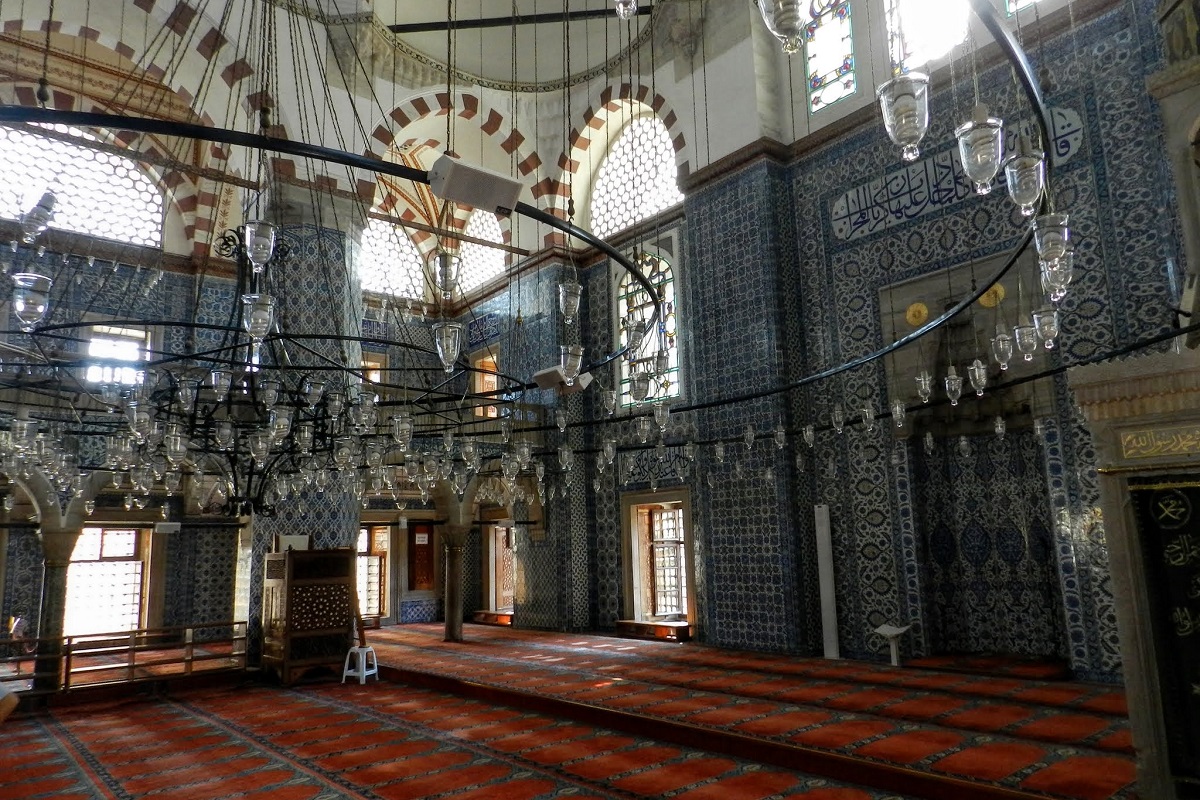
The Nuruosmaniye Mosque, situated near the Grand Bazaar and an example of Ottoman Baroque style; the Rüstem Pasha Mosque, a 16th Century structure noted for its impressive and extensive interior tile work; the Laleli Mosque, known in Turkish as the Tulip Mosque; and the Arap Mosque, a former Roman Catholic church constructed in Italian Gothic style, with little changes made following its conversion to a mosque.
Please don’t forget: For visitors to Istanbul it is important to remember that many of the city’s mosques are active religious centers, thus certain protocol must be followed when entering these buildings. Many mosques post their respective rules outside the entrance to the building. Most will require the removal of one’s shoes. Many will ask that women cover their head and that shorts and short skirts not be worn in the building. For female visitors to a mosque, it is best to carry a scarf and shawl when visiting, so one can cover the head and arms if necessary. Many mosques will allow photography, but are more restrictive with flash photography and most never allow photography during prayer.
Where to stay
Lampa Design Hotel
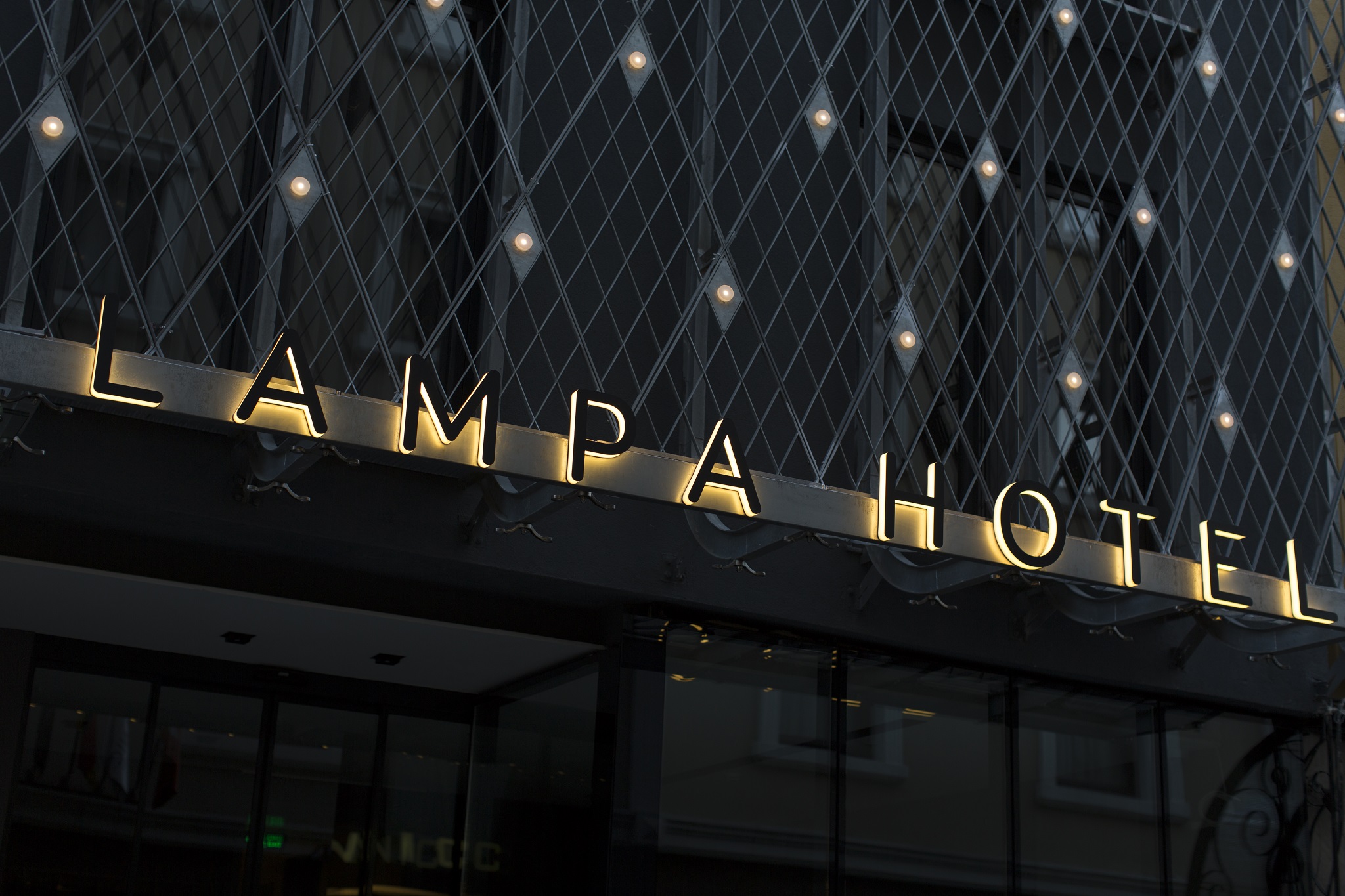
The Lampa Design Hotel is a popular choice amongst travelers in Istanbul, whether exploring or just passing through. Lampa Design Hotel welcomes you to explore Istanbul from the most ideal location, since the hotel is located in the vibrant neighborhood of Şişli, the city center of Istanbul. This hotel introduces a unique “boutique design hotel” experience with the warmth of the antique gas lamp and industrial minimalist architecture.
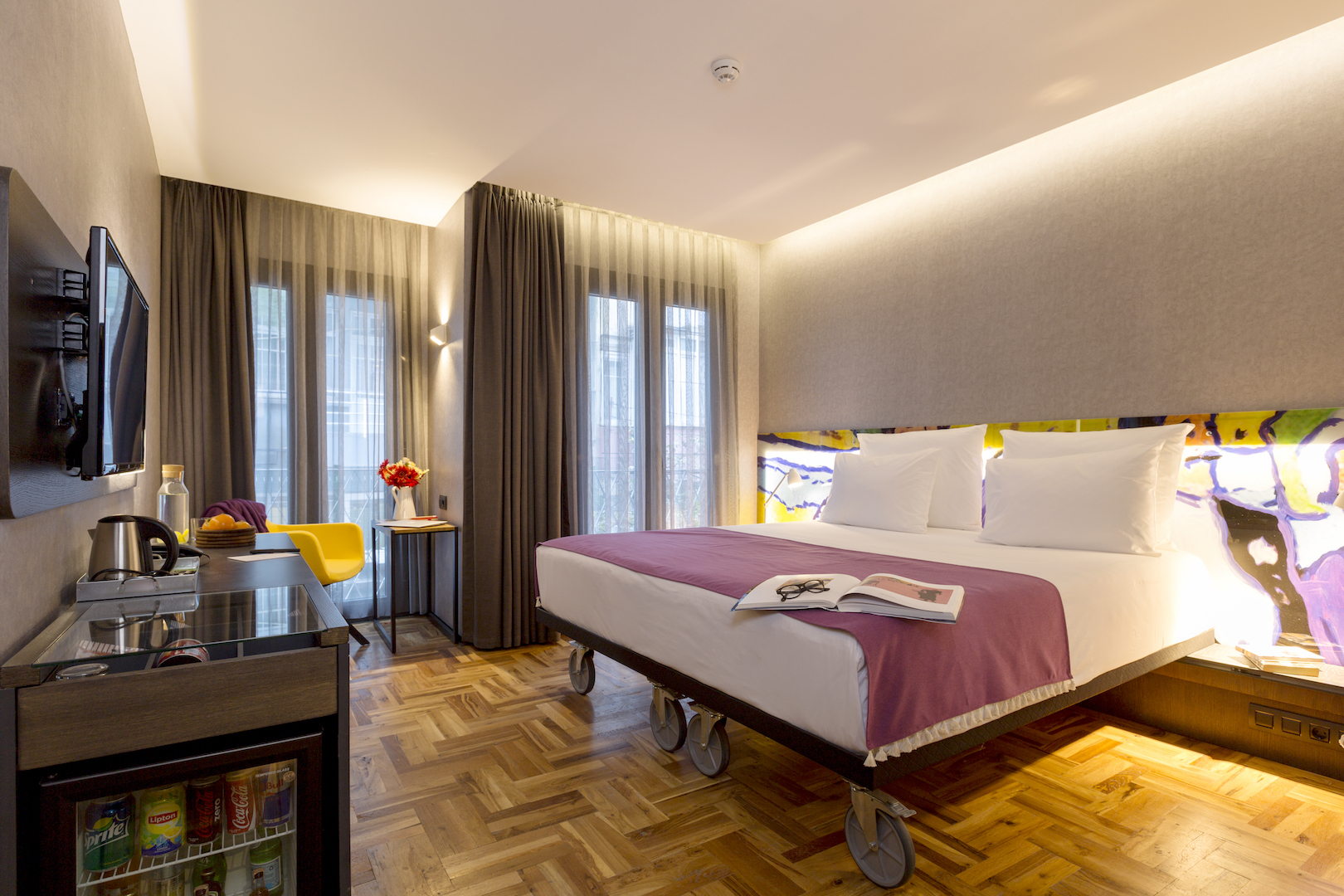
incorporates some of the antique gas lamps from Orhan Utan’s collection within a mixture of industrial modern design, natural wood parquet, marble staircases, cast- in mosaic and generous use of metal hardware. In addition, the art pieces and enchanting facade detail conceived by Architect Selami Çiçek add the finishing touches to this exquisitely devised hotel. All 20 different sized rooms of Lampa Design Hotel are designed with customized furniture, special amenities and the unique art pieces inspired by celebrated artist Fikret Mualla Saygı (1904-1967).
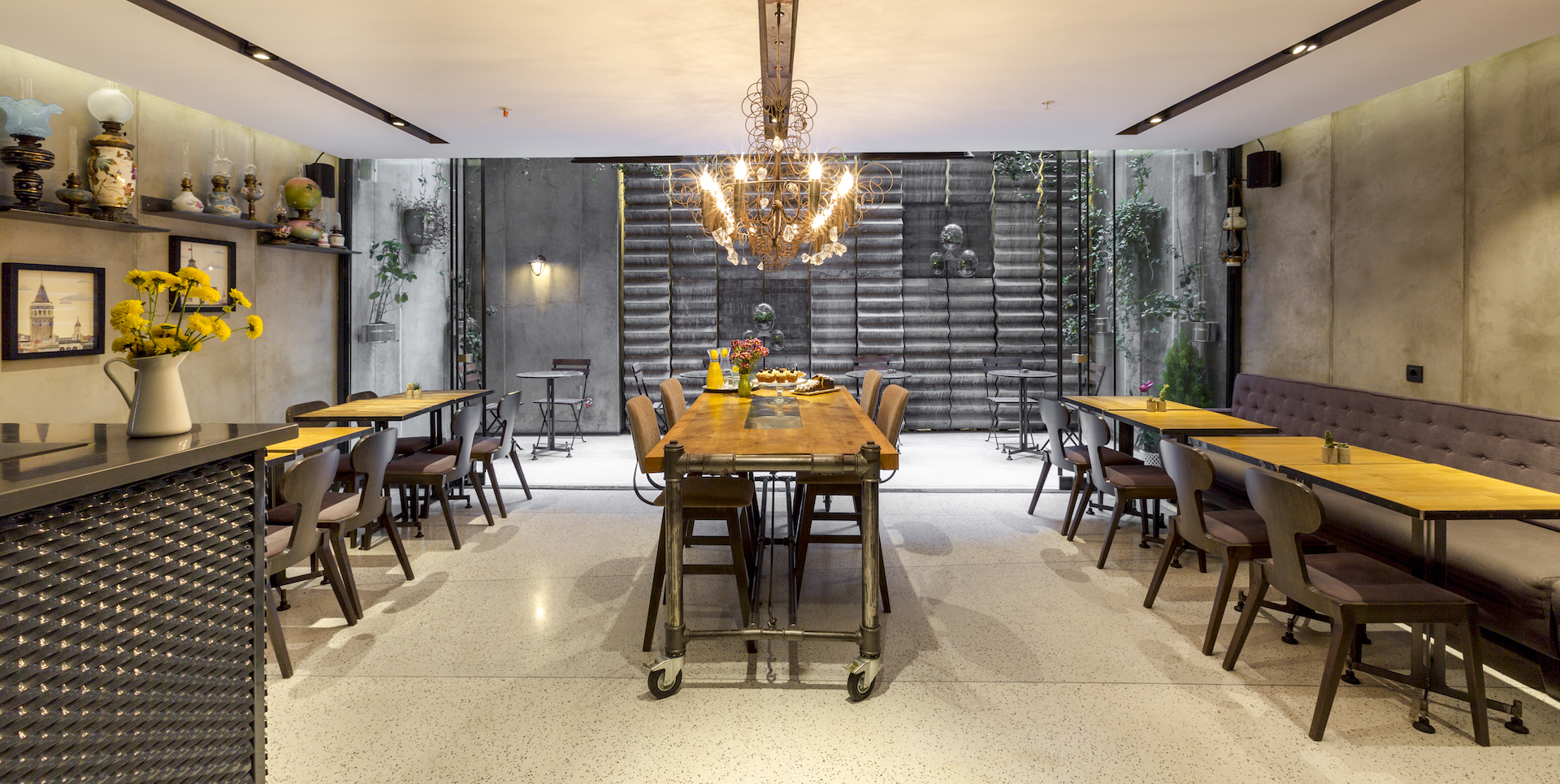
Guestrooms are designed to provide an optimal level of comfort with welcoming decor and some offering convenient amenities. Glass walled bathroom and French balcony detail in every room creates a spacious feeling in the rooms of Lampa Design Hotel. Depending on the seasonal changes their comfortable duvet sets are being changed with special healthy quilts to create the best relaxing environment in the beds. The Lampa Lab is the place where guests can enjoy their delicious breakfast and afternoon coffee, with terrarium designs.



One comment
Ricky Catania
5 Agosto 2020 at 20:00
Una città magica, chi non l’ha mai visitata non può capirne il fascino ne quanto ti lascia dentro quella voglia irrefrenabile di tornarci! Quando finirà quest’incubo chiamato Covid, sarò il primo a prendere un volo per Istanbul! ♥️♥️♥️
Edit